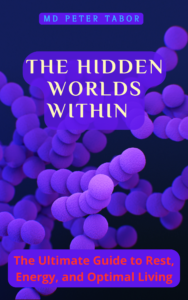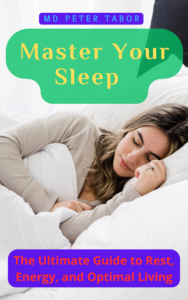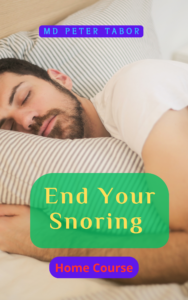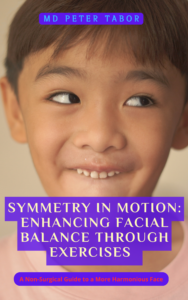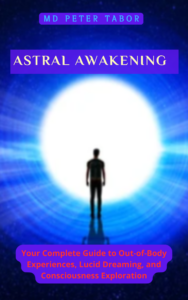—>health.bedscape.com (Main Page) —>Blogposts -Because Your Health is Important
—>Bedscape.com –Become a Warrior in Bed
How to Get Better Sleep: Tips for a Restful Night
Because Your Health and Sleep Matter
Main Page: Explore More Health Tips | Bedscape.com: Your Sleep Solutions
Introduction: Why Better Sleep Matters
Waking up tired after a restless night is something we’ve all experienced. You feel slow, cranky, and off all day. Sleep isn’t just a break—it’s a must for your body and mind to stay healthy. But in today’s busy world, it’s easy to push sleep aside for work, scrolling, or late-night shows. The truth is, good sleep powers everything: your focus, your mood, even your physical strength. It’s not about forcing eight hours—it’s about making the hours you get work for you.
If you’re struggling to figure out how to get better sleep, you’re not alone. Millions search for ways to rest well every month. The good news? You can unlock restful nights with simple changes. This guide dives into practical tips for restful sleep, from building the best sleep routine to creating a sleep-friendly bedroom. Whether stress keeps you up, your room feels off, or you just want to wake up refreshed, these steps will help. Say goodbye to tossing and turning—and hello to mornings where you feel alive and ready. Let’s explore how to transform your sleep starting tonight.
Why Quality Sleep Changes Everything
Sleep does more than just rest you—it keeps you going strong. While you’re out cold, your brain sorts through the day, locking in memories and sharpening your thinking. Ever notice how you solve problems better after a good night? That’s sleep at work. It also steadies your emotions. Skip it, and you’re more likely to snap or feel down. Get it right, and you’re calmer and happier.
Your body needs it too. At night, your cells fix themselves, your immune system gears up, and your energy resets. Without enough, you’re at risk for weight gain, colds, or worse down the road. Short-term, missing sleep leaves you foggy and dragging—think forgetting where you parked or zoning out at work. Over time, it can pile up into bigger health problems. Knowing this makes it clear: figuring out how to get better sleep isn’t a luxury—it’s a need. Let’s start with where you sleep.

How to Create a Sleep-Friendly Bedroom
Your bedroom sets the tone for rest. A messy, noisy, or bright space can keep you awake, while a calm one invites sleep. Here’s how to build a sleep-friendly bedroom that helps you unwind.
Start with your bed. A mattress that’s too hard or soft can leave you tossing. Pick one that fits how you sleep—side sleepers might like medium-firm, back sleepers something firmer. Pillows matter too—try one that keeps your neck straight, not propped too high. It might take testing a few, but it’s worth it for comfort.
Next, control the room. Keep it cool—around 60-67°F (15-19°C)—since your body sleeps best when it’s not hot. Blackout curtains or blinds block streetlights or early sun, keeping it dark. Noise can jolt you awake, so try earplugs or a fan to muffle sounds. If you like background noise, a machine with soft rain or waves can work wonders.
Keep it simple and clean. Too much stuff—clothes on the floor, a cluttered desk—can make your mind race. Clear it out, tuck things away, and add a touch of calm, like a soft blue wall or a lavender scent from a candle. This isn’t just decor—it’s a signal to relax. A sleep-friendly bedroom can cut the time it takes to doze off, leaving you rested by morning.
Image Idea: Cozy bedroom with blackout curtains and soft lighting. Alt text: “Sleep-friendly bedroom with dim lights and calm decor.”
Self-Transformation Notebook Pack $19
Unlock your potential with this essential $19 bundle of five life-enhancing guides! Ready to thrive? Start here.
- END YOUR SNORING: Snoring isn’t just noisy—it can signal serious health risks like sleep apnea. Discover how to stop it naturally, without surgery, using quick, daily exercises that clear your airways and restore peaceful sleep.
- MASTER YOUR SLEEP: Poor sleep can sap your energy, fog your mind, and weaken your health over time. Master your sleep naturally—no pills needed—with proven habits and routines that unlock deep, refreshing rest tailored to you.
- THE HIDDEN WORDS WITHIN: Your body harbors unseen universes—trillions of microbes shaping your health, mood, and future. The Hidden Worlds Within reveals how these tiny allies in your gut and mouth can falter, fueling chronic illness and mental strain. With practical steps and fermented food recipes, harness their power—no lab required—to thrive from the inside out.
- SYMMETRY IN MOTION: ENHANCING FACIAL BALANCE THROUGH EXERCISES: Discover the secrets to a more balanced face without surgery—through simple exercises, the viral Mewing technique, and everyday habits that reshape your features over time. This book unveils how your jaw, cheeks, and eyes can find harmony, blending science, practical steps, and real stories to guide you toward subtle, confidence-boosting symmetry.
- ASTRAL AVAKENING: YOUR COMPLETE GIUDE TO OUT OF BODY EXPERIENCES, LUCID DREAMING AND CONSCIOUSNESS EXPLORATION: Unlock the secrets of your consciousness and soar into the astral realm with this transformative guide. From mastering out-of-body experiences to weaving their calm and creativity into your daily life, this book offers a 30-day journey to awaken your spirit and explore the unseen. Ready to lift off?
Building the Best Sleep Routine
A steady routine is one of the best sleep routines for better rest. Your body loves knowing what’s next—it’s got a built-in clock that thrives on habit. Here’s how to set it up.
Pick a bedtime and wake-up time—say, 10:30 p.m. to 6:30 a.m.—and stick to it, even on weekends. This keeps your clock on track, so you’re sleepy when you want to be. Before bed, wind down. An hour out, skip your phone or TV—their light tricks your brain into staying awake. Try reading a book instead—something light, not a thriller—or listen to quiet music.
Add a ritual to ease into sleep. A warm shower relaxes your muscles, or a cup of chamomile tea soothes your nerves. Writing down tomorrow’s to-do list can clear your head—no more worrying in bed. Do this every night, and your body learns: this means sleep’s coming. Consistency turns restless nights into peaceful ones.
Image Idea: Person reading a book in bed with a warm lamp. Alt text: “Best sleep routine with pre-bed reading.”
Lifestyle Tricks for Restful Sleep
What you do all day shapes your nights. Small choices—like moving, eating, or chilling out—can boost your sleep. Here are some tips for restful sleep through lifestyle tweaks.
Get moving. A 30-minute walk or bike ride most days helps you fall asleep faster and stay asleep longer. Morning or afternoon is ideal—don’t do it too late, like after 7 p.m., or you’ll be too wired to rest. Exercise tires you out in a good way, setting up deeper sleep.
Watch what you eat and drink. Foods like turkey, nuts, or oatmeal can nudge you toward sleep—they’ve got stuff that calms your brain. Skip coffee or soda after noon—it hangs around for hours, keeping you up. Big dinners late, like pizza at 9 p.m., can sit heavy—eat light and early, like veggies and chicken at 6 p.m. Drink water all day, but ease off by evening to avoid bathroom trips.
Stress can wreck sleep, so unwind. Try breathing slow—4 seconds in, 6 out—for 5 minutes before bed. Writing worries in a notebook gets them out of your head. A calm routine, like stretching or a bath, tells your body it’s time to rest. These habits build nights where you sleep sound and wake up strong.
Dealing with Sleep Trouble
Sometimes sleep doesn’t come easy. If you’re stuck awake or waking up too much, here’s how to tackle it.
If you can’t sleep—called insomnia—don’t just lie there. Stay up longer during the day, like 16 hours, so you’re tired at night. Move more—a 20-minute walk helps. Keep your room dark and quiet. If your mind’s racing, picture random things—tree, shoe, bird—slowly for 10 minutes. Still up after 20 minutes? Get out of bed, sit with a dim light, and read something dull—no screens.
Other issues, like snoring loud (sleep apnea) or twitchy legs (restless legs), might need a doctor. They can check you out and suggest fixes, like a breathing mask or lifestyle changes. Don’t ignore it—better sleep fixes a lot.
Tech can help too. Apps or trackers—like a Fitbit—show how you sleep, spotting patterns to tweak. A white noise machine drowns out noise, making it easier to drift off. Use these, but skip screens an hour before bed.
Image Idea: Sleep tracker on a wrist by a bed. Alt text: “Using tech for tips for restful sleep.”
Thinking Right About Sleep
How you see sleep matters. If you stress about it, it gets harder. Think of it as a friend—something your body needs and can do well. Tell yourself, “I’ll rest easy tonight,” and let go of worry. Good habits back this up—stick to your routine, keep your room cozy, skip caffeine late. Over time, this mindset plus action turns sleep into a strength.

Wrap-Up: Start Tonight
Better sleep isn’t a mystery—it’s a choice. With a sleep-friendly bedroom, the best sleep routine, and smart habits, you can rest well and wake up ready. Try one thing tonight—darken your room or skip your phone—and build from there. Your body will thank you with energy and clarity. What’s your first step?
Want more? Check our sleep gear guide or visit Bedscape.com for tools to rest better.
